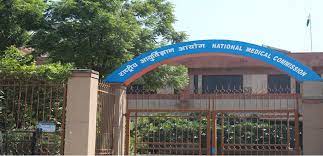
In the evaluation conducted for the academic year 2022-23, the National Medical Commission (NMC) found that a majority of medical colleges had ghost faculty and senior residents. None of these institutes met the mandated 50 percent attendance requirement. The NMC also noted that none of the faculty members visited the emergency department regularly, citing a lack of interaction opportunities apart from the casualty medical officer.
The Under-Graduate Medical Education Board (UGMEB) of the NMC explained that the posting in the emergency medicine department is intended as a break period for students. This information was provided in response to a grievance from the Associations of Emergency Physicians of India (AEPI) regarding the exclusion of emergency medicine specialty as a requirement for establishing new medical colleges.
In a recent regulation, the NMC removed the requirement for an emergency department when establishing new medical colleges. Initially, in the draft released on June 23, the emergency medicine department was one of the 14 departments that new medical colleges approved for undergraduate admissions were required to have.
In their reply to AEPI dated September 22, the UGMEB revealed a stark contrast between the situation on paper and the reality of emergency medicine departments. They stated, “While checking the Aadhaar Enabled Biometric Attendance of these colleges, we were shocked to note that there was 100 per cent failure in all colleges with respect to the faculty and senior resident doctors employed to fulfil the requirements as per the MSR (Minimum Standard Requirement) 2020. Majority of the colleges had ghost faculty and SRS (senior residents) or had not employed the required faculty at all.”
Attendance was assessed randomly at any time of the year over a two-month period during working days, according to the board. Despite warnings and ample time provided to rectify deficiencies, none of the colleges met the requirement of even 50 percent attendance. Zero attendance remained common.
The UGMEB relies heavily on artificial intelligence for evaluating the functionality of a medical college and affiliated hospital through the Digital Mission Mode Project (DMMP) installed in NMC. They use the Aadhaar Enabled Biometric Attendance System (AEBAS), classroom teaching, and hospital functioning as assessment tools.
The reply also noted a significant increase in the number of medical colleges with functional academic emergency departments, from 45 to 134, along with a rise in MD emergency medicine seats from 120 to 462.
In total, 246 undergraduate medical colleges in 27 states were assessed for recognition or continuation of recognition for the academic year 2022-23, according to the board.
The authorities found that students did not frequent the emergency medicine department regularly due to a lack of interaction opportunities, aside from the casualty medical officer.
Regarding the course curriculum suggested by experts, the reply stated, “it ran into 300 pages and includes everything required in a hospital… Secondly, the problems at PG level are different which I shall not touch upon since these are beyond the purview of UGMEB.”
During the period of August 22 to 24, UGMEB officials interacted with all colleges, involving a total of 768 participants and 92 university representatives, including vice chancellors. All issues, including those related to emergency medicine departments, were discussed, and most doubts were cleared.











